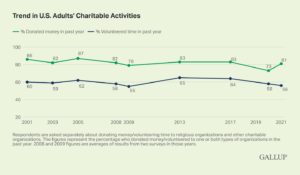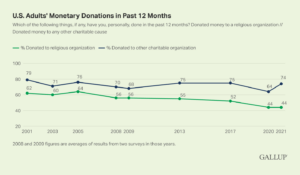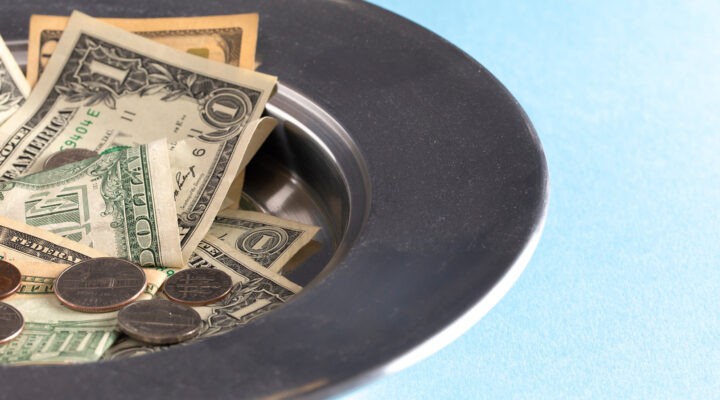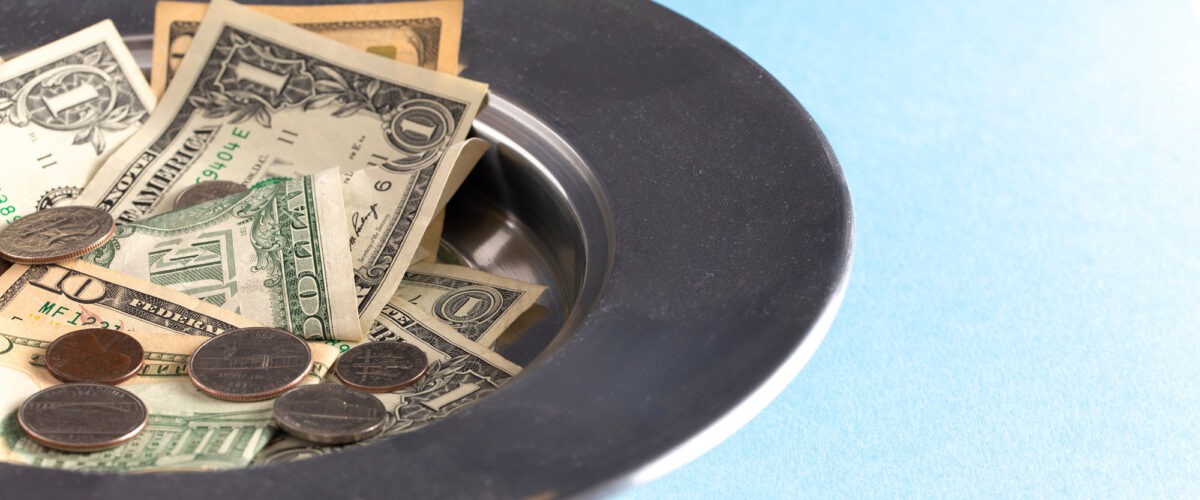Americans’ giving to charitable causes bounced back in 2021 after a dip at the start of the pandemic, but most of the recovery was in the secular nonprofit world, not the religion sector.
New data from Gallup show 81% of Americans say they donated money to a religious or other charitable organizations in 2021, up from a historic low of 73% in 2020. However, donations to religious organizations — which includes churches — remained unchanged from the 44% level hit in 2020.
There is a 30-point gap between the share of Americans who say they gave to religious causes and those who say they gave to other charitable organizations. That is by far the largest gap recorded by Gallup in at least two decades.

While the percentage of Americans giving to religious causes had been on a slow slide for some time, it took an 8-point dip during the pandemic from 52% to 44% and then stayed then for 2021. Thus, for two years now, less than half of Americans report giving anything to religious causes.
That parallels other similar trends in church membership and church attendance. Gallup notes the 44% of U.S. adults donating to a religious organization nearly matches the 47% who belong to a church, synagogue, mosque or temple.
Fewer people giving to religious causes does not equal less money being given to individual congregations, however. Many congregations reported stable or increased total dollars given in 2021.

While Gallup’s latest polling does not delve into church finances, other organizations that specifically monitor church giving are giving preliminary reports of many American churches miraculously holding their own financially despite the pandemic.
Charitable giving to non-religious causes had dropped from 75% to 64% in the first year of the pandemic but bounced back to 74% in 2021.
Among all charitable giving, households with annual incomes of $100,000 or more bounced back stronger than households with lesser incomes. The top-income households dropped from a 92% giving rate before the pandemic to 87% during the pandemic and then back up to 92% in 2021.
By comparison, households with incomes of $40,000 to $99,999 dropped from a 90% participation rate to 78% and then back up to 84% — still 6-points shy of pre-pandemic levels. Likewise, households with less than $40,000 in annual income went from 73% to 56% and then back up to 68%.
Related articles:
In second year of pandemic uncertainty, church leaders are watching year-end giving closely
Younger and older Americans aren’t returning to church as much as the middle-aged


